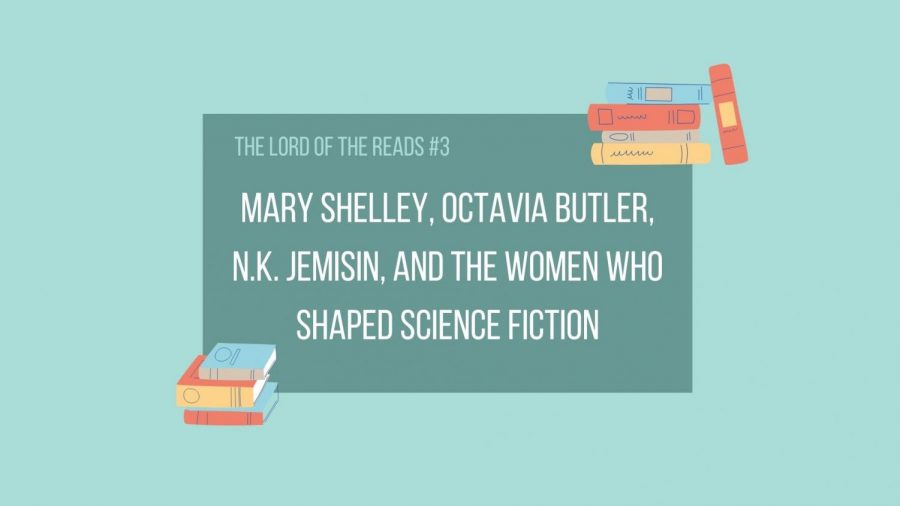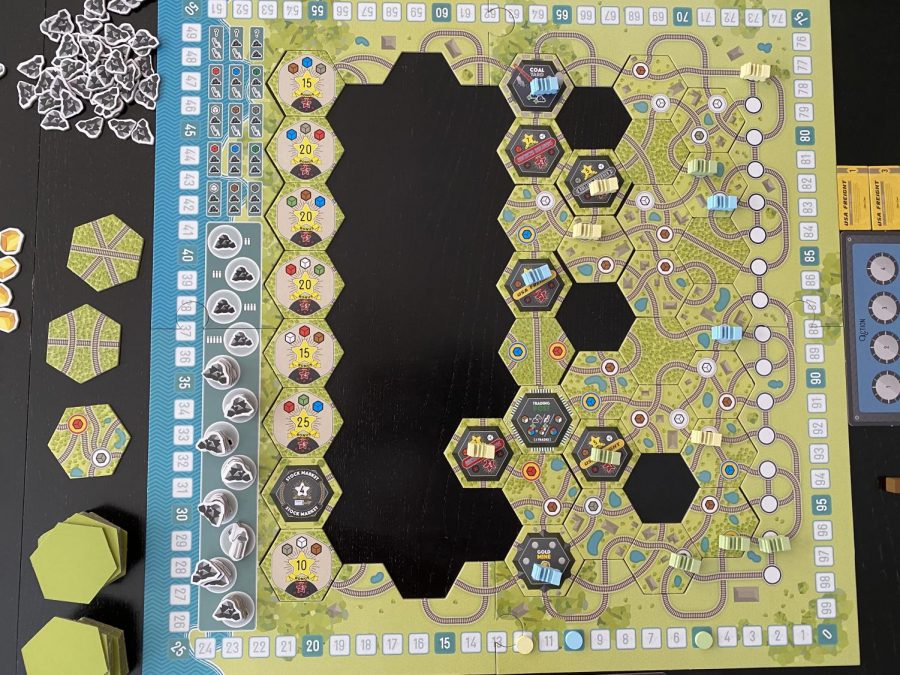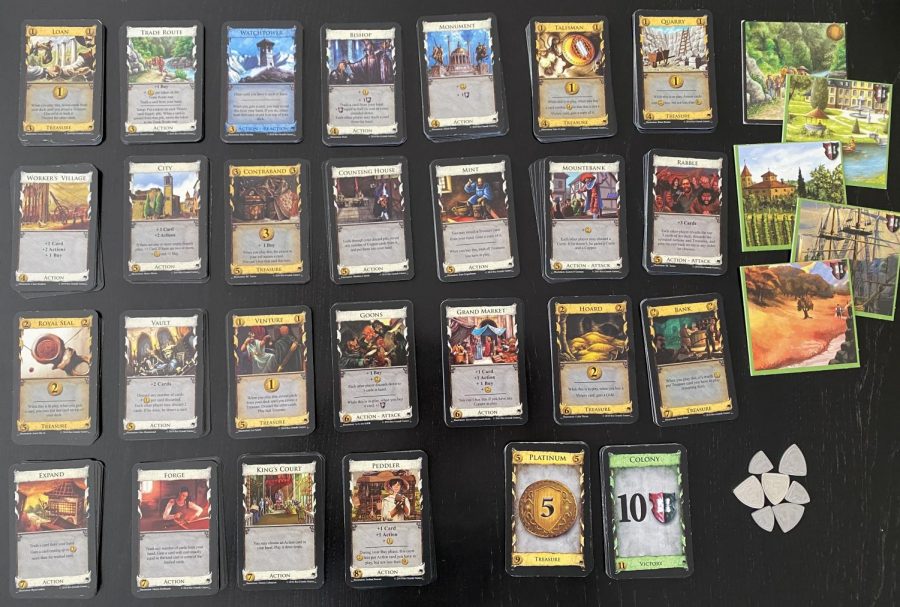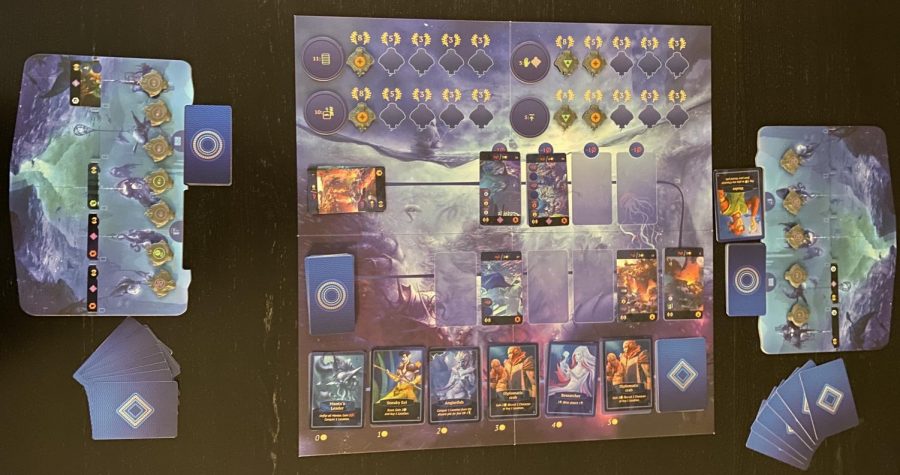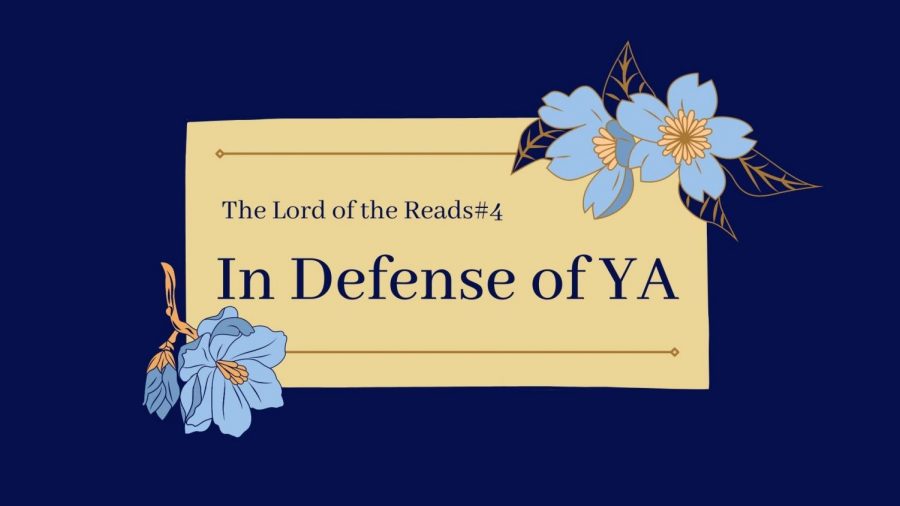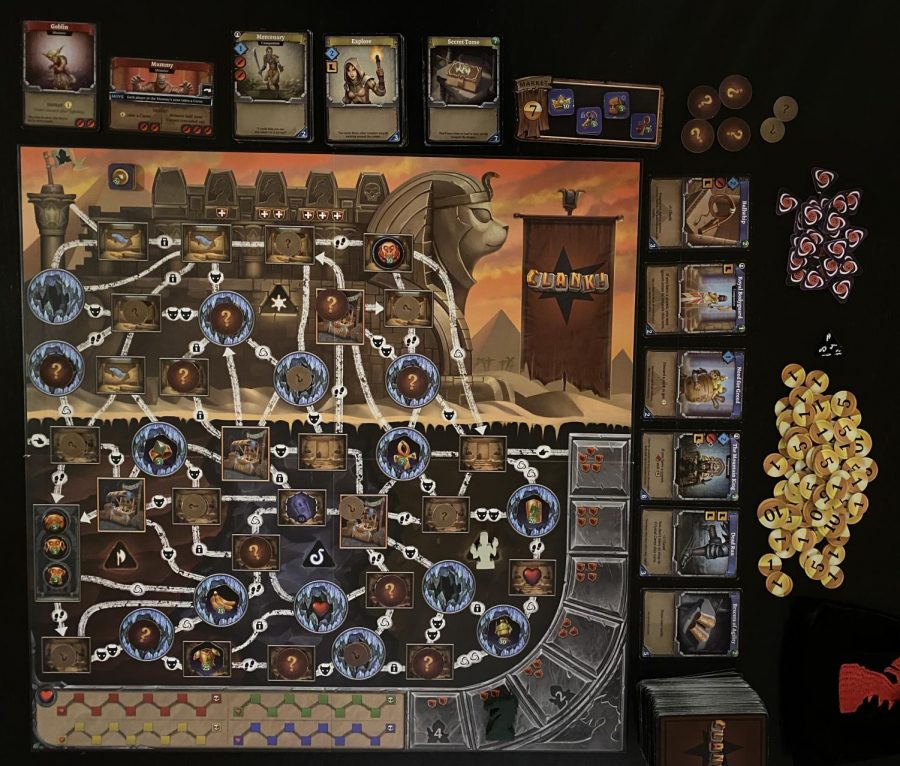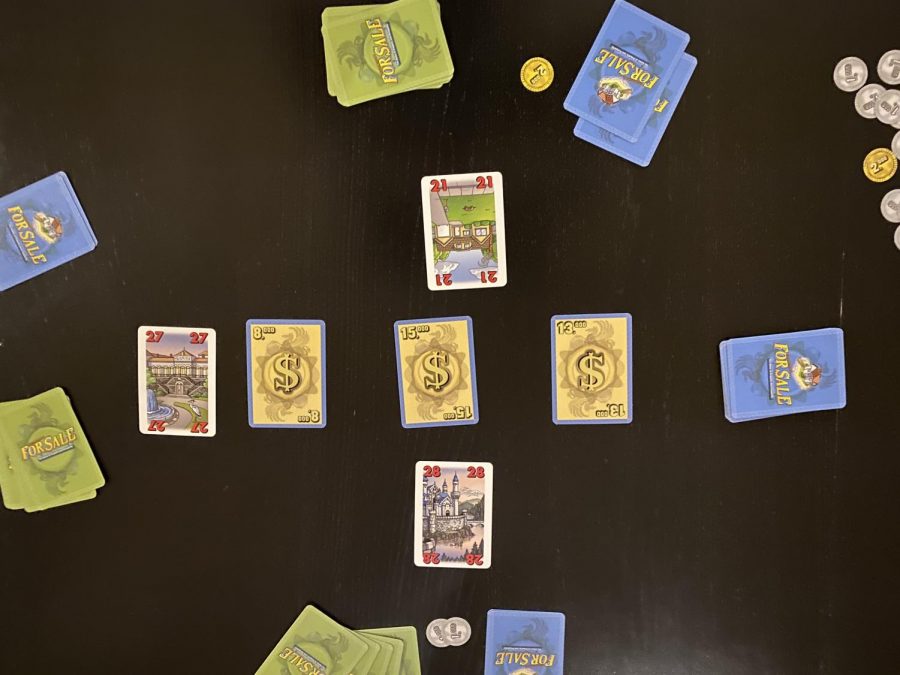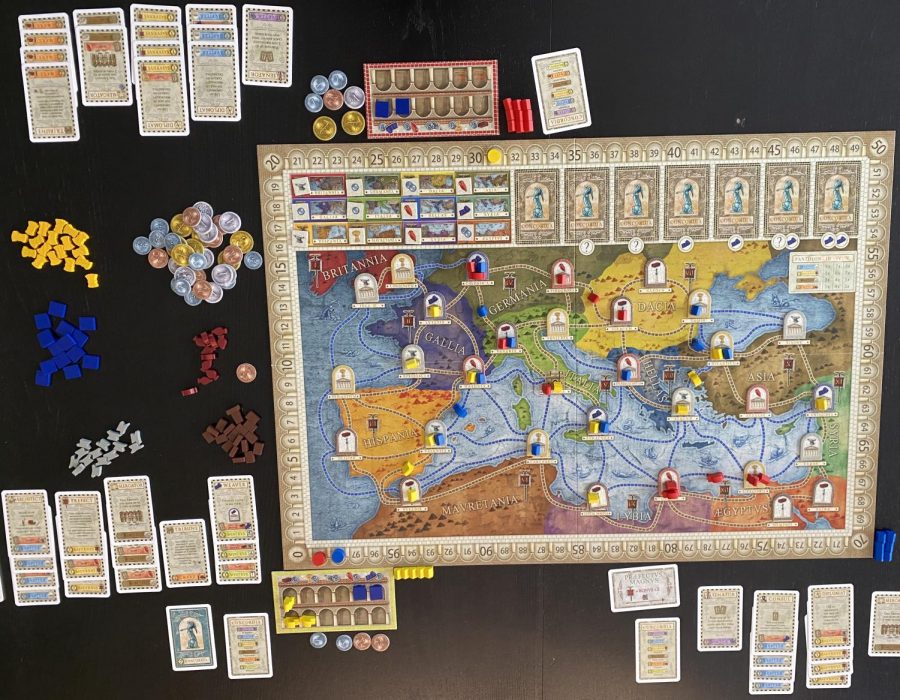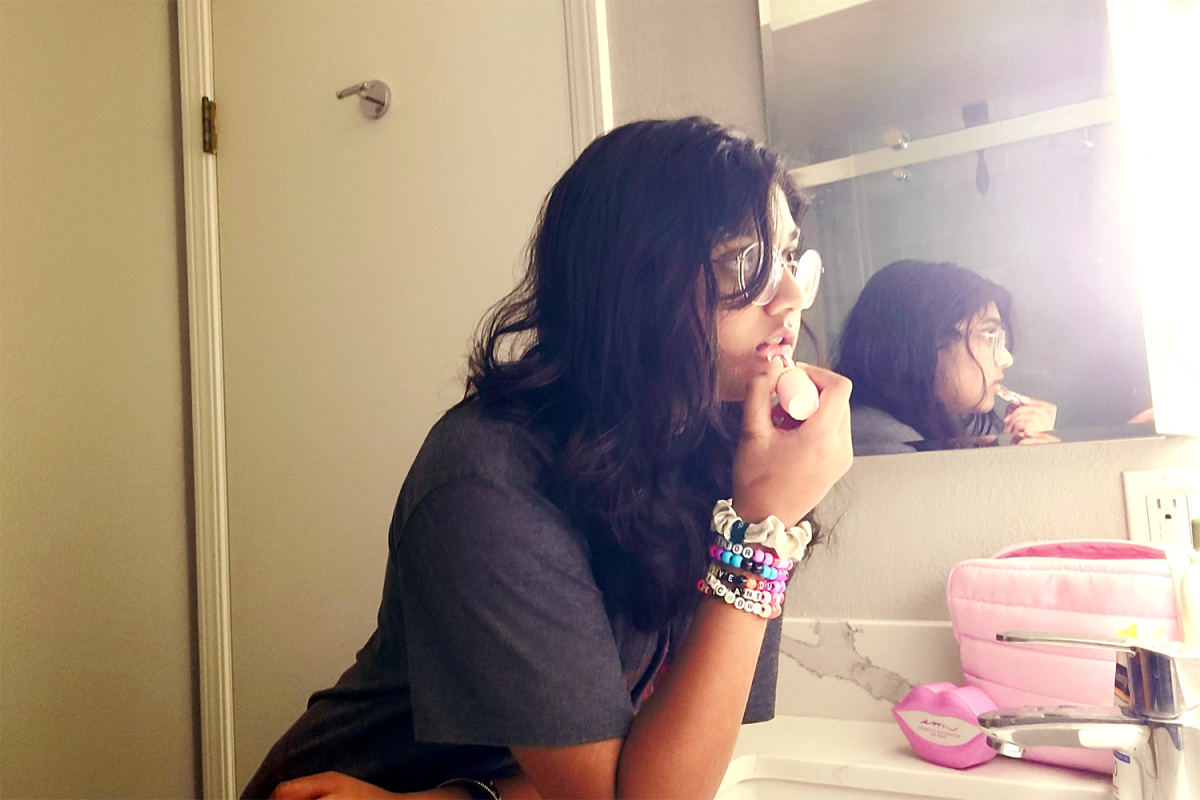Hello and welcome to the third installment of The Lord of the Reads, a student blog about science fiction and fantasy literature.
The last two articles in this series were spent on the fantasy genre; today, we move into the realm of science fiction. I’m not as well-versed in sci-fi as I am with fantasy, so my original plan for this article was to read and review some of the genre’s most classic literature to get a solid foundation. I began the research and planning stage, trying to put together a reading list for myself. As I scrolled through countless listicles titled “must-read science fiction” or “10 sci-fi classics everyone should read,” I noticed a trend. The demographic of authors presented seemed to be heavily skewed towards white men, focusing mostly on Isaac Asimov, Ray Bradbury, George Orwell, and Frank Herbert. While books like Fahrenheit 451 and 1984 are important classics without a doubt, I had a feeling there was more to the genre than I was seeing.
I was right: as soon as I began to search specifically for female authors, I discovered a whole new side of science fiction. As I researched, I came to realize that female writers were not just valid contributors to the genre but have quite literally shaped it from its beginning. Science fiction was built by women, and it continues to grow and evolve due to their work.
I decided to scrap my first idea for this article. Of course, that doesn’t mean that the books I had been planning on reading (including Asimov’s Foundation, Herbert’s Dune, and Douglas Adams’ Hitchhiker’s Guide to the Galaxy) aren’t deserving of recognition. I still plan on reading them in the future, and I don’t want to take away any of their literary value. However, I felt that the writings of female authors held more personal significance for me, and I was more excited to explore their lives and work.
I started researching again, turning my focus to influential female-identifying authors throughout the genre. Out of the dozens of incredible writers I discovered, I found myself drawn to three women across two centuries: Mary Shelley, Octavia Butler, and N.K. Jemisin. Though they have lived very different lives and written very different things, they have all shaped science fiction into the genre we see today.
The Writers
Mary Shelley (1797-1851)
Mary Wollstonecraft Shelley has been a household name for generations, largely due to her classic novel Frankenstein. As every AP Lit student knows, Shelley’s masterpiece features a young scientist who discovers the secret to creating life and the fallout of his endeavor to construct a living creature from spare parts. Written during the rise of industrialization and published in 1818, the book poses the classic question: when has science gone too far?
Frankenstein was assigned as my summer reading going into AP Lit, and to be completely honest, I didn’t expect to enjoy it. I thought it would be dry, dense, hard to follow, and didactic. However, it ended up being one of the best books I’ve read for the class. I can’t help but describe it as “edgy”: stuffed full of Gothic motifs, thunderstorms, romantic overflow of emotion, mythological allusion, subtext, and good old-fashioned horror; Frankenstein has pretty much all the drama and intrigue I could ever want. The novel is even better when you realize that this is where it all started: Frankenstein is widely regarded as the first example of science fiction. An entire genre was born from the imagination of a teenage girl, and that’s amazing. This is definitely a book I want to revisit in the future, but maybe without the intense highlighting and annotations next time.
A trailblazer in her own right, Shelley comes from a family of influential figures. She is the daughter of noted feminist Mary Wollstonecraft (author of A Vindication of the Rights of Women), and William Godwin, an early proponent of anarchism and utilitarianism. Shelley is also known for editing and publishing the works of poet Percy Shelley, her husband. Though Mary Shelley is most well-known for Frankenstein, she wrote several other books, including The Last Man, an early dystopian novel published in the 1820s.
Octavia Butler (1947-2006)
Octavia Butler was a pioneer of Afrofuturism and one of the most influential science fiction authors in history. Butler drew inspiration from the world around her, including her experiences with racism and misogyny. Butler was the first African American woman to win the prestigious Hugo and Nebula Awards, as well as the first science fiction author to win the MacArthur “Genius” Grant. She’s even been honored in outer space: NASA has named the landing site of their Perseverance rover “Butler” to commemorate her work.
The term “Afrofuturism” was first used in 1993 by scholar Mark Dery. In his essay “Black to the Future: Interviews with Samuel R. Delaney, Greg Tate, and Tricia Rose,” he defines the term as “speculative fiction that treats African-American themes and addresses African-American concerns in the context of twentieth-century technoculture.” Afrofuturism goes beyond literature into film, music, and more and can be seen in Marvel’s Black Panther (2018) and the work of artist Janelle Monáe.
Butler was one of the first Black writers in the science fiction genre and helped lay the groundwork for Afrofuturism. One of her most famous works is the 1979 novel Kindred, which follows the story of Dana, a Black woman in modern-day Los Angeles who finds herself pulled back through time to the antebellum South. Butler is also the author of the postapocalyptic Xenogenesis trilogy, as well as Parable of the Sower, which takes place in a dystopian version of California.
Octavia Butler started as one of just a few Black SFF authors in the twentieth century and one of the only women in the field. Over the course of her life, however, her work and presence as a woman of color in a largely white, male-dominated genre opened the door for other authors.
N.K. Jemisin (1972-)
Women like Shelley and Butler each paved the way for female writers in science fiction and N.K. Jemisin is no different. A lifelong storyteller and a former book reviewer for The New York Times, she cites Butler as one of the reasons for her love of sci-fi. Jemisin made history in 2017 (one year after quitting her day job to write full time) when she became the first person in history to win three consecutive Hugo Awards, all for her Broken Earth trilogy. In her acceptance speech, she addressed her struggle as a Black, female science fiction author and the way that people like her are shaping the genre for the better: “This is the year in which I get to smile at all of those naysayers—every single mediocre insecure wannabe who fixes their mouth to suggest that I do not belong on this stage, that people like me cannot possibly have earned such an honor, that when they win it, it’s meritocracy, but when we win it it’s ‘identity politics’ — I get to smile at those people, and lift a massive, shining, rocket-shaped middle finger in their direction.”
Jemisin was actually one of the few female sci-fi authors I knew about before doing research for this article. I read The Fifth Season, the first novel in the Broken Earth Trilogy, before starting my capstone project. It’s become one of my favorite books of all time, in any genre. This was one of the first books that taught me that SFF does not only function as escapism but can be a vehicle to explore our own world more deeply. Environmental disaster and systemic oppression play a central role in the novel, making the story’s alien world of The Stillness eerily similar to our own. Themes around gender, identity, and family are also closely woven into the storytelling, making the characters seem incredibly human despite their abilities to quite literally tear the earth apart. The stories of women take center stage, which I love, and each character is deeply developed.
The prose is absolutely stunning, alternating between blunt simplicity and breathtaking poeticism. The plot doesn’t follow a typical structure, which makes it even more engaging. I can’t speak for the rest of the trilogy, but The Fifth Season strays from the typical “chosen one” story that’s popular in SFF: at its core, it is the story of a woman who just wants to find belonging, and I find that incredibly powerful. The story follows a woman who has the power to create earthquakes and tsunamis, but in the end, just wants to protect the people she loves. Jemisin presents us with a world on the edge of mass extinction, but it isn’t a world populated with heroes. Instead, it’s full of people who are doing what they need to do to survive and keep each other safe. As Jemisin said in a piece for Time Magazine, “sometimes it is the journey, and not the final climactic battle against some Dark Lord or another, that defines who we are […] our happy ending might very well depend on how loudly and powerfully we tell our stories along the way.”
So, what did I learn?
Working on this article opened so many doors for me to explore. I only researched three authors in-depth, but there are so many more out there to read, follow, and look up to. In addition to reading more female-identifying sci-fi writers, I also want to read more work from trans and nonbinary authors, whose work is just as essential to science fiction.
SFF pretends to be a male-dominated genre, and I’m okay with reading books with a ton of male characters (I literally wrote 1200 words about my love for The Lord of the Rings, which has about three women and fifty men total). However, it’s incredibly refreshing to discover that women have persisted for over 200 years to shape SFF and create the representation they deserve. These women have faced sexism, racism, and erasure, yet they continue to define the genre. Being able to see myself in a space where I thought I didn’t quite belong is so powerful, and I’m so grateful to the women who have made that possible.
It’s crucial that these authors get the recognition they deserve so much: Shelley is required reading for most high schoolers, but I had never heard before of writers like Butler, Andre Norton, Nalo Hopkinson, or Nnedi Okorafor, despite their hugely influential body of work. School curriculums have a long way to go: they tend to teach sci-fi only in the context of writers like Asimov, Huxley, and Orwell at the expense of the wider, more diverse genre. In the future, I don’t want to have to teach myself about women in science fiction; I want high school academia to broaden itself beyond the overwhelmingly white, male literary canon. There is true merit and value beyond what we subjectively deem to be “academic” science fiction, and when we don’t recognize that, we lose out on so many of the beautiful, powerful, and thought-provoking stories that characterize the genre.

